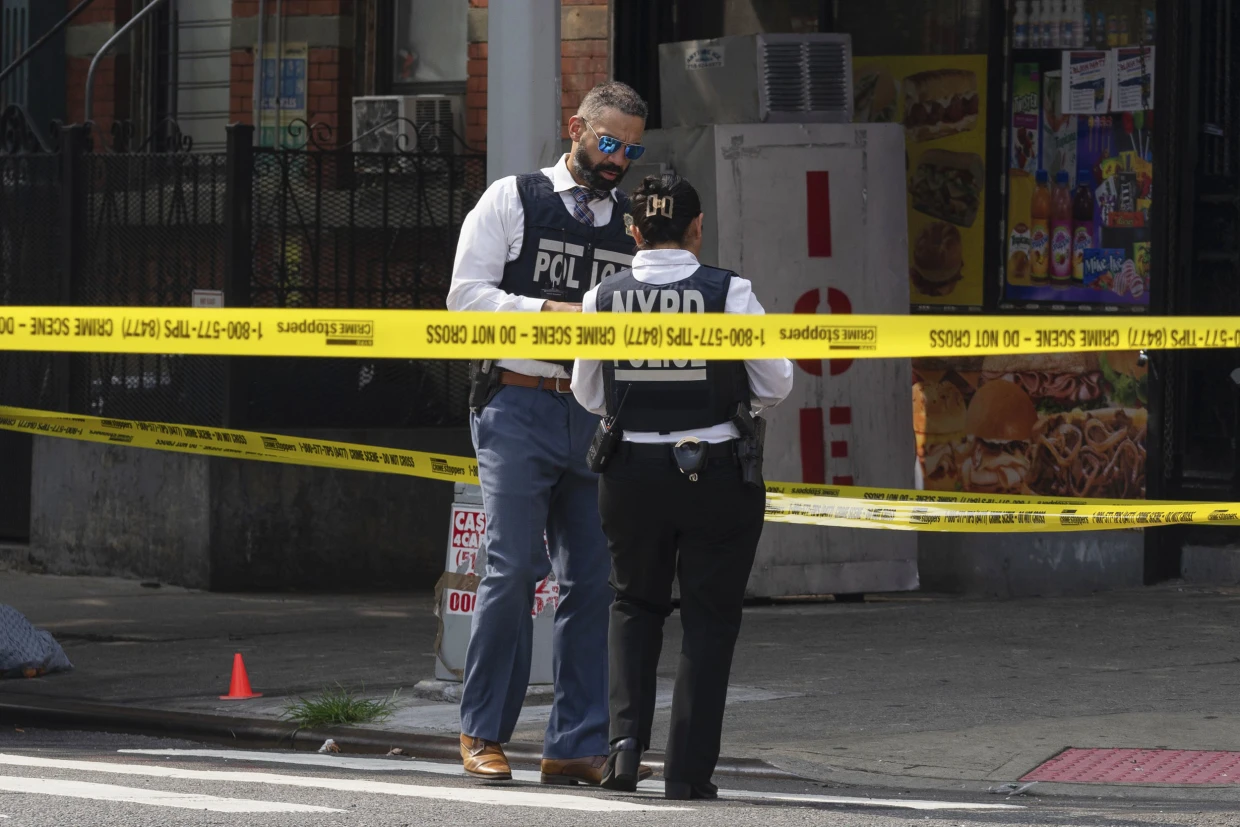ST. LOUIS — Violent crime across the U.S. decreased last year — dropping to about the same level as before the onset of the COVID-19 pandemic — but property crimes rose substantially, according to data in the FBI’s annual crime report released Monday.
The report comes with an asterisk: Some law enforcement agencies failed to provide data. But a change in collection methods in compiling 2022 numbers helped, and the FBI said the new data represents 83.3% of all agencies covering 93.5% of the population. By contrast, last year’s numbers were from only 62.7% of agencies, representing 64.8% of Americans.
Violent crime dropped 1.7%, and that included a 6.1% decrease in murder and non-negligent manslaughter. Rape decreased 5.4% and aggravated assault dropped 1.1%, but robbery increased 1.3%. Violent crime had also decreased slightly in 2021, a big turnaround from 2020, when the murder rate in the U.S. jumped 29% during the pandemic that created huge social disruption and upended support systems.
The violent crime rate of 380.7 per 100,000 people was a tick better than 2019 — the year before the pandemic hit the U.S., when the rate was 380.8 per 100,000 people.
Richard Rosenfeld, criminal justice professor emeritus at the University of Missouri-St. Louis, said the drop in violence can be attributed largely to the fact that the “stresses and strains” associated with the pandemic have abated.
“By and large what we’re seeing is simply a return to something approaching normal after the big changes associated with the pandemic,” Rosenfeld said.
Despite the waning violence, property crimes jumped 7.1%, with motor vehicle thefts showing the biggest increase at 10.9%. The FBI said carjackings increased 8.1% from 2021, and the vast majority of carjackings involving an assailant with a weapon. Someone was injured in more than a quarter of all carjackings.
Rachael Eisenberg, managing director of rights and justice for the Washington, D.C.-based Center for American Progress, said that while the FBI report looks at 2022 data, more recent statistics indicate that the drop in violent crime will continue through this year.
In fact, the FBI findings are in line with a report released in July by the nonpartisan think tank the Council on Criminal Justice. That report using data from 37 surveyed cities found that murders dropped 9.4% in the first half of 2023 compared to the first half of 2022, but vehicle thefts rose a whopping 33.5%.
Last year’s FBI report arrived with major caveats since nearly two-fifths of all policing agencies failed to participate, including big cities like New York, Los Angeles and Miami. That followed a major overhaul in the reporting system.
For this year’s report, the FBI used data voluntarily collected from agencies using the newer National Incident-Based Reporting System, but also included data from agencies still using an older system, known as the Summary Reporting System. That accounted, in part, for the huge increase in participating agencies.
The overhaul will eventually make crime data more modern and detailed, federal officials said, but the switchover can be complicated for police departments. While the increase in 2022 participation was due in part to inclusion of Summary Reporting System data, the FBI noted that an additional 1,499 agencies submitted data through NIBRS.
This year’s report showed that while the the number of adult victims of fatal gun violence decreased 6.6%, the estimated number of juvenile victims rose 11.8%. Gun-safety advocates decry the loosening of gun laws, especially in conservative-leaning states around the U.S.
Assaults on law enforcement officers rose 1.8% compared to 2021. An estimated 31,400 of the 102,100 assaults resulted in injuries in 2022, up 1.7% from the previous year.
Violent crime overall remains far lower than the historic highs of the 1990s.
While the direct impact has ebbed, Rosenfeld said the pandemic could still indirectly result in more crime. The pandemic prompted many firms to allow employees to work from home some or all of the time. Desolate city streets make crime more likely.
“The more people in the street, the more people difficult it is for somebody to commit a crime because there are so many eyes on the street,” Rosenfeld said.




